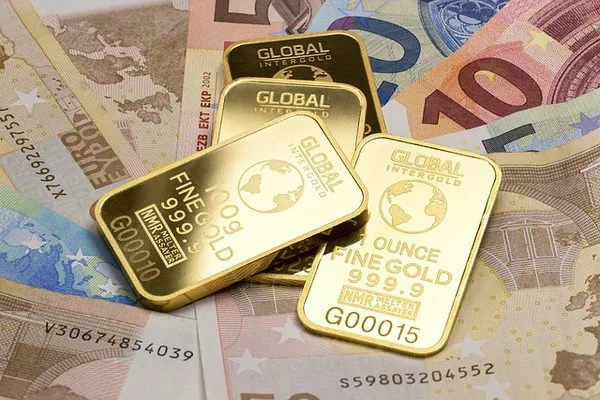In the realm of precious metals, gold has long held a revered status as a symbol of wealth and a store of value. Among the various forms in which gold is traded, the gold bar stands out as an embodiment of purity and monetary value. Investors and collectors alike are often captivated by the allure of these meticulously crafted bars, but what exactly is one gold bar worth? In this article, we delve into the factors that determine the value of a gold bar, its market dynamics, and the broader implications for those involved in the intricate world of precious metals.
The Basics of Gold Bars
Before we explore the intricacies of a gold bar’s value, it’s essential to understand the basics of these gleaming ingots. Gold bars, also known as gold bullion or gold ingots, are refined and minted pieces of gold with a specific weight and purity. These bars are produced by accredited mints and refineries, adhering to stringent quality standards to ensure their authenticity and value. Gold bars come in various sizes, ranging from a few grams to several kilograms, with the most common denominations being one ounce, ten ounces, and one kilogram.
Determinants of Gold Bar Value
Several factors contribute to determining the value of a gold bar, making it more than just a shiny metal block. These factors include:
Purity: The purity of gold is measured in karats, with 24 karats being the purest form. However, most gold bars are 99.9% pure (24 karats). The higher the purity, the more valuable the gold bar.
Weight: The weight of a gold bar is a crucial factor in determining its value. Gold is traditionally measured in troy ounces, with one troy ounce equaling approximately 31.1035 grams. Larger bars typically have lower premiums over the spot price of gold, making them a more cost-effective investment.
Market Conditions: Like any other commodity, the value of gold is influenced by supply and demand dynamics in the market. Economic conditions, geopolitical events, and inflation rates can significantly impact the price of gold, subsequently affecting the value of gold bars.
Brand and Mint: The reputation of the mint or refinery that produces the gold bar can also influence its value. Bars from well-known and reputable mints are often more sought after in the market, contributing to a higher perceived value.
Condition and Packaging: The condition of the gold bar, including any signs of wear or damage, can affect its value. Additionally, the packaging and accompanying documentation, such as certificates of authenticity, can play a role in determining the overall worth of the gold bar.
See Also: What Is The Price Of An Ounce Of Gold
Market Dynamics of Gold Bars
Gold bars are primarily traded in two markets: the physical market and the futures market.
Physical Market: In the physical market, buyers purchase actual gold bars for immediate delivery or storage. The price in this market is influenced by factors such as the spot price of gold, manufacturing costs, and the aforementioned determinants of gold bar value.
Futures Market: The futures market involves the trading of gold contracts for future delivery. These contracts derive their value from the expected future price of gold. While the futures market provides opportunities for speculation, it is crucial to note that it is more volatile and carries higher risks than the physical market.
The Spot Price and Premiums
The spot price of gold refers to the current market price for immediate delivery of one troy ounce of gold. Gold bars are typically priced slightly above the spot price due to premiums. These premiums encompass various costs, including fabrication, distribution, and dealer markup.
The premium on a gold bar can vary depending on factors such as the size of the bar, the brand reputation, and market conditions. Smaller bars often command higher premiums, reflecting the additional costs associated with their production.
Calculating the Value of a Gold Bar
To determine the value of a gold bar, one can use a straightforward formula:
Total Value=(Weight in Ounces)×(Spot Price+Premium)
For example, if you have a 1-ounce gold bar with a spot price of $1,800 per ounce and a premium of $50, the total value would be:
Total Value=(1ounce)×($1,800+$50)=$1,850
Investment Implications
Owning physical gold, in the form of gold bars, is often considered a hedge against economic uncertainty and inflation. Investors may choose to allocate a portion of their portfolio to gold to diversify risk and preserve wealth. Additionally, the tangible nature of gold bars provides a sense of security, as investors have a physical asset in their possession.
However, it’s essential for investors to carefully consider the costs associated with buying, storing, and selling gold bars. Storage fees, insurance, and potential transaction costs can impact the overall return on investment. Moreover, liquidity can be a concern, as selling physical gold bars may take more time than selling gold in the futures market.
See Also: What Is 1 Gram Of 22 Carat Gold Worth?
Conclusion
In the world of finance and investment, the worth of a gold bar extends beyond its gleaming surface. Understanding the determinants of its value, the dynamics of the markets in which it is traded, and the implications for investors is crucial for anyone venturing into the realm of precious metals. Whether held as a symbol of wealth, a hedge against economic volatility, or a tangible asset in a diversified portfolio, the value of a gold bar is a multifaceted concept that goes beyond its weight in precious metal.


